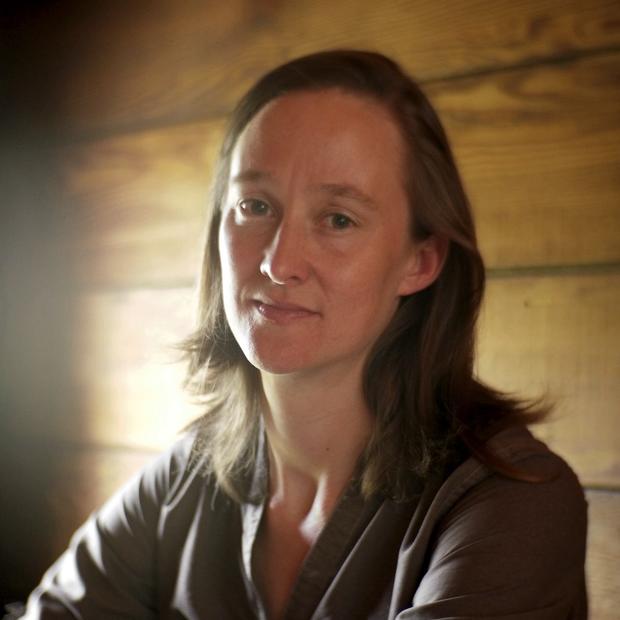In other words, the project isn’t just about renewable energy and reducing carbon pollution, it’s about resilience. If a windstorm, snowstorm, earthquake or other emergency disrupts the city’s power, residents will be able to gather at Miller to stay warm or cool, power their devices and share resources. In an age of intensifying extreme weather events, planning for the unexpected becomes increasingly urgent.
What if every public school building in Seattle could play this role?
That’s one goal of a campaign that’s bringing together students, teachers, parents and activists who believe that the school system must be part of the solution to the climate crisis. They’re pressing the Seattle School Board to take action this fall to include funding for “solar schools” in the upcoming renewal of the Seattle schools levy, which will appear on the ballot in February.
The roots of the effort lie in the 2019 campaign for a Seattle Green New Deal. It called for transformative climate action, not just by the city itself, but by all the major institutions operating within it. That fall saw massive, youth-led climate strikes across the globe, including here in Seattle. Organizers channeled that momentum into 2020 and carried it through all the tumultuous events of that year, from the onset of the COVID-19 pandemic and the economic disruptions it caused to the uprisings for racial justice in the wake of George Floyd’s murder.
The campaign also builds on the Clean Schools Resolution passed by the Seattle School Board in February, which commits the district to being fossil fuel-free by 2040. School board members Lisa Rivera-Smith and Zachary DeWolf championed the resolution. Working with a group called Climate Parents, now part of the Sierra Club, they began meeting with Seattle Public Schools staff and community stakeholders in early 2020 and spent 10 months crafting the language. In addition to going carbon-free, the resolution aims to build community resilience in the face of climate disasters, create opportunities for classroom learning and eventually achieve cost savings from the shift to renewable power.
Achieving these goals will mean electrifying the bus fleet and other vehicles and transitioning from gas to electric for all heating and cooking. The resolution also commits to zero-carbon electricity by 2027 through a “combined use of energy from Seattle City Light and renewable energy sources installed on district property” — like solar panels.
“Climate pollution from buildings is the fastest growing source of climate pollution in our city,” says Jess Wallach, an organizer with the climate justice group 350 Seattle. The schools, she says, can set an example.
Fast forward to this summer. Volunteers from 350 Seattle, who had been organizing with teachers over the past year, had an idea. “The solar schools campaign came out of the recognition that this year’s school levy was a really exciting opportunity to continue moving the Seattle School District forward on climate action and climate resilience,” says Wallach.
Now, the campaign is calling on the school board to fully fund the implementation of the Clean Schools Resolution and immediately commit to solar installations on every public school rooftop. Six schools have solar panels already — but over a hundred more schools don’t.
Installing those systems would create good green jobs, in addition to bolstering renewable energy production and building community resilience in neighborhoods throughout the city. And those jobs could go to former students. The Seattle Public Schools has a community workforce agreement ensuring that building trades jobs involving the district will prioritize students and their families.
The campaign has support from labor, too. Just last night, MLK Labor, the central labor body of King County, which counts the Seattle Education Association among its affiliate unions, voted to throw its weight behind the push for solar schools.
Despite broad support and no organized opposition, success is not a given. Renewable power may ultimately result in cost savings, but the price tag for the transition is hefty — $1.3 billion to achieve all the goals of the Clean Schools Resolution, according to Rivera-Smith. And she’s not convinced that solar panels should be a first step.
“SPS’s first priority should, I believe, be electrifying all buildings and modernizing for efficiency,” she says. “Because City Light, which we use, is already carbon free, on-site solar production does little to nothing to lower our emissions. Our first move should be getting rid of natural gas boilers and electrifying our transportation.”
The school board is in the process of drafting levy priorities. Rivera-Smith says discussions so far include a proposal to set aside $1 million for clean energy projects, gender neutral bathrooms and ADA accessibility upgrades. Seattle Public Schools is recruiting for a task force that will draw up a plan to implement the Clean Schools Resolution; some of these funds could begin to carry out that body’s recommendations.
But even if the whole $1 million went to clean energy projects, that’s a drop in the bucket. It’s not enough to solarize a single school, or to make a perceptible dent in any of the Clean Schools Resolution’s major goals. Without cutting other projects that depend on the levy, therefore, serious climate action depends on increasing the size of the package. Given that the last levy passed with about 70% support in 2019, there seems ample scope for a larger measure, especially if voters know it’s addressing the climate crisis. But does the Seattle School Board have the political will?
That remains to be seen. Virtual public hearings on the levy are scheduled for Sept. 21 and 23. The board will finalize and vote on the levy language later this fall, in time for it to appear on our February 2022 ballots.
Will solar schools make it into the funding package? Wallach says that persuading the board to make this commitment will take a lot of public pressure.
“The real enemy here is business as usual,” she says.



